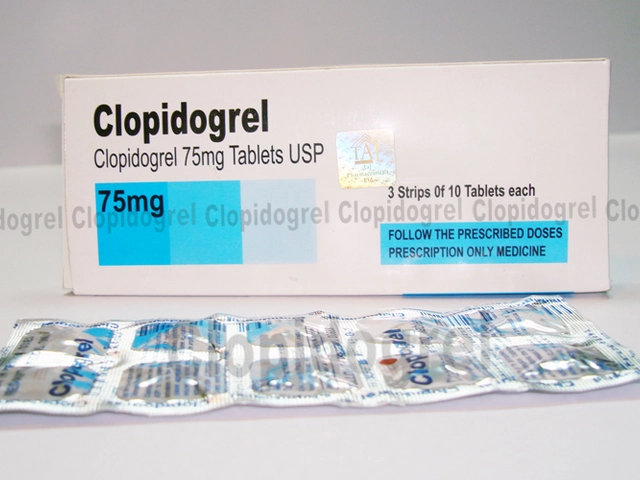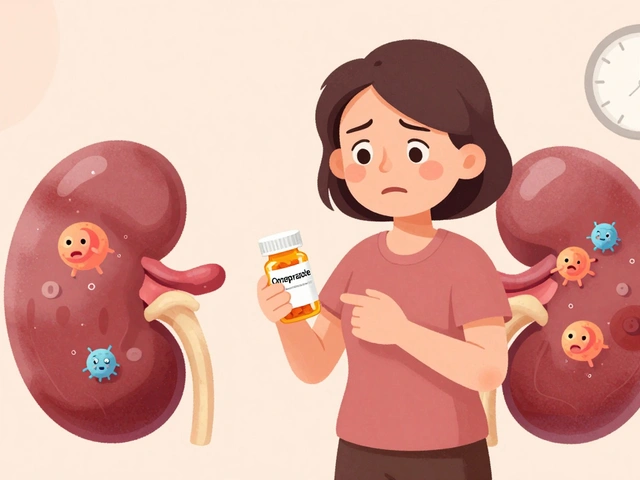Antihistamine Comparison Tool
Find Your Best Antihistamine Match
Answer a few questions about your symptoms and preferences to see which antihistamine suits you best.
Your Best Match
Why This Match?
Key Considerations
| Feature | Selected Option | Other Options |
|---|---|---|
| Sedation Risk | ||
| Onset of Action | ||
| Mechanism |
Ever wondered why some people swear by Ketotifen while others reach for the newer, non‑sedating pills you see on pharmacy shelves? The answer lies in how each drug tackles histamine, the speed of relief, and the trade‑off between efficacy and side effects. This guide breaks down Ketotifen, puts it side‑by‑side with the most common alternatives, and helps you decide which option fits your allergy or asthma needs.
What Is Ketotifen?
Ketotifen is a mast‑cell stabilizer and H1‑receptor antagonist that has been used since the 1970s to prevent allergic reactions and manage asthma symptoms. It works by stopping mast cells from releasing histamine and other inflammatory mediators, while also blocking the H1 receptors that histamine would normally hit. The dual action makes it unique among many modern antihistamines, which are typically only H1 blockers.
How Ketotifen Works: Dual Mechanism Explained
Most antihistamines act like a simple lock on the H1‑receptor door, preventing histamine from opening it. Ketotifen adds a second lock by stabilizing the mast cells themselves, so they release less histamine in the first place. This results in:
- Longer‑lasting control of seasonal allergic rhinitis.
- Reduced nighttime coughing in mild asthma.
- Potential benefit for atopic dermatitis when used topically (off‑label).
The downside? Because it takes time for mast‑cell stabilisation to kick in, patients often notice the full effect only after a few days of consistent dosing.
Common Clinical Uses
Ketotifen is approved in several countries for:
- Seasonal and perennial allergic rhinitis.
- Exercise‑induced asthma.
- Allergic conjunctivitis.
Doctors also prescribe it off‑label for chronic urticaria and allergic skin conditions, leveraging its mast‑cell stabilising properties.
Alternative Antihistamines: The Usual Suspects
When you walk into a pharmacy, you’ll likely see a shelf of second‑generation antihistamines that promise rapid, non‑sedating relief. Here’s a quick snapshot of the most common alternatives.
Loratadine is a second‑generation H1‑receptor antagonist widely marketed as Claritin.
Cetirizine is a second‑generation antihistamine sold under Zyrtec, known for a slightly faster onset than loratadine.
Fexofenadine is a non‑sedating antihistamine (Allegra) that works well for patients sensitive to drowsiness.
Desloratadine is the active metabolite of loratadine, marketed as Clarinex, offering a slightly longer half‑life.
Diphenhydramine is a first‑generation antihistamine best known as Benadryl, often used for short‑term relief despite its drowsy side effects.

Side‑Effect Profiles: Sedation, Dryness, and More
Side effects are the main reason people choose one antihistamine over another.
- Ketotifen: Mild sedation in ~10% of users, dry mouth, and occasional weight gain when taken long‑term.
- Loratadine: Very low sedation (<2%), occasional headache.
- Cetirizine: Slightly higher sedation rate (~5%) but still far below first‑generation drugs.
- Fexofenadine: One of the least sedating options; may cause mild gastrointestinal upset.
- Desloratadine: Similar to loratadine, minimal drowsiness.
- Diphenhydramine: High sedation (30‑50%), anticholinergic effects like dry mouth and urinary retention.
If staying alert for work or school is critical, the second‑generation drugs (loratadine, cetirizine, fexofenadine, desloratadine) usually win. Ketotifen sits in the middle: some sedation but also added mast‑cell stabilisation.
Effectiveness: Onset, Duration, and Clinical Evidence
Clinical trials give us quantifiable data to compare.
| Drug | Onset (minutes) | Duration (hours) | Peak Plasma Level |
|---|---|---|---|
| Ketotifen | 30-60 | 12‑24 | 2‑3 |
| Loratadine | 60‑90 | 24 | 1‑2 |
| Cetirizine | 20‑30 | 24 | 1‑1.5 |
| Fexofenadine | 15‑30 | 12‑13 | 2‑3 |
| Desloratadine | 60‑90 | 24 | 1‑1.5 |
| Diphenhydramine | 15‑30 | 4‑6 | 1‑1.5 |
Ketotifen’s longer duration can be a benefit for patients who dislike dosing multiple times a day. However, the slower onset means it’s not ideal for sudden allergy attacks; a fast‑acting drug like cetirizine or fexofenadine may work better in that scenario.
Dosing and Administration Differences
- Ketotifen: Typically 1 mg twice daily for adults; pediatric dosing is weight‑based.
- Loratadine: 10 mg once daily.
- Cetirizine: 10 mg once daily (5 mg for children).
- Fexofenadine: 180 mg twice daily or 120 mg once daily.
- Desloratadine: 5 mg once daily.
- Diphenhydramine: 25‑50 mg every 4-6 hours as needed.
Ketotifen’s twice‑daily schedule can be a compliance hurdle, especially for teenagers or busy adults.

Choosing the Right Antihistamine: Who Benefits Most?
Below is a quick decision matrix to match common patient profiles with the most suitable drug.
| Patient Need | Top Choice | Why |
|---|---|---|
| Long‑term control of allergic rhinitis with mild sedation acceptable | Ketotifen | Dual mast‑cell stabilisation + 24‑hour coverage |
| Need for non‑sedating, once‑daily dosing | Fexofenadine | Fast onset, minimal drowsiness |
| Rapid relief for breakthrough symptoms | Cetirizine | Onset within 20 min, strong histamine blockade |
| Budget‑conscious with acceptable sedation | Diphenhydramine (OTC) | Cheap, widely available |
| Children under 6 needing a gentle option | Loratadine | Low sedation, pediatric syrup formulation |
Never treat a medication choice as one‑size‑fits‑all. Factors like age, comorbidities (e.g., glaucoma, urinary retention), and lifestyle (driver, student) weigh heavily.
Quick Checklist Before Switching
- Identify primary symptom (nasal congestion, itchy eyes, asthma wheeze).
- Assess tolerance for sedation.
- Check dosing frequency you can commit to.
- Review existing conditions that interact with antihistamines (e.g., prostate issues, pregnancy).
- Consult your pharmacist or physician before making a change.
Frequently Asked Questions
Can I take Ketotifen with other allergy meds?
Yes, but only under medical supervision. Combining two H1 blockers can increase sedation and dry‑mouth side effects. A common strategy is to use Ketotifen daily for baseline control and keep a fast‑acting antihistamine like cetirizine on hand for breakthrough flare‑ups.
Is Ketotifen safe for children?
Ketotifen is approved for children over 2 years in many countries, but dosing is weight‑based and must be prescribed. Parents should monitor for drowsiness and discuss any behavioral changes with a pediatrician.
Why does Ketotifen sometimes cause weight gain?
The weight gain isn’t directly caused by the drug’s chemistry; it’s often a side effect of reduced allergy‑related inflammation that allows a return to normal eating patterns, plus mild sedation that can lower activity levels.
How quickly will Ketotifen start working for asthma?
Because mast‑cell stabilisation takes time, patients typically notice a reduction in exercise‑induced bronchospasm after 3‑5 days of consistent dosing. It’s not a rescue inhaler.
Can I use Ketotifen eye drops instead of oral tablets?
Ketotifen eye drops (often sold as Zaditor) are formulated for allergic conjunctivitis and work locally on the eye surface. They don’t provide systemic mast‑cell stabilisation, so they’re not interchangeable with oral tablets for nasal or asthma symptoms.
Bottom Line
If you need a once‑daily, non‑sedating pill, one of the newer second‑generation antihistamines will likely suit you better. But if you value the extra mast‑cell stabilising action and don’t mind a twice‑daily schedule, Ketotifen remains a solid, evidence‑backed choice, especially for chronic allergic rhinitis and mild asthma control. Always talk to a healthcare professional before swapping medications, as individual health factors can tip the balance.







Comments(5)